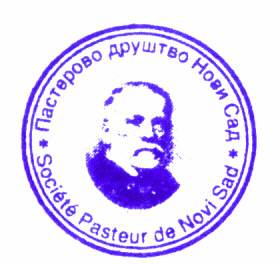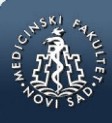md-medicaldata
Main menu:
- Naslovna/Home
- Arhiva/Archive
- Godina 2024, Broj 1
- Godina 2023, Broj 3
- Godina 2023, Broj 1-2
- Godina 2022, Broj 3
- Godina 2022, Broj 1-2
- Godina 2021, Broj 3-4
- Godina 2021, Broj 2
- Godina 2021, Broj 1
- Godina 2020, Broj 4
- Godina 2020, Broj 3
- Godina 2020, Broj 2
- Godina 2020, Broj 1
- Godina 2019, Broj 3
- Godina 2019, Broj 2
- Godina 2019, Broj 1
- Godina 2018, Broj 4
- Godina 2018, Broj 3
- Godina 2018, Broj 2
- Godina 2018, Broj 1
- Godina 2017, Broj 4
- Godina 2017, Broj 3
- Godina 2017, Broj 2
- Godina 2017, Broj 1
- Godina 2016, Broj 4
- Godina 2016, Broj 3
- Godina 2016, Broj 2
- Godina 2016, Broj 1
- Godina 2015, Broj 4
- Godina 2015, Broj 3
- Godina 2015, Broj 2
- Godina 2015, Broj 1
- Godina 2014, Broj 4
- Godina 2014, Broj 3
- Godina 2014, Broj 2
- Godina 2014, Broj 1
- Godina 2013, Broj 4
- Godina 2013, Broj 3
- Godina 2013, Broj 2
- Godina 2013, Broj 1
- Godina 2012, Broj 4
- Godina 2012, Broj 3
- Godina 2012, Broj 2
- Godina 2012, Broj 1
- Godina 2011, Broj 4
- Godina 2011, Broj 3
- Godina 2011, Broj 2
- Godina 2011, Broj 1
- Godina 2010, Broj 4
- Godina 2010, Broj 3
- Godina 2010, Broj 2
- Godina 2010, Broj 1
- Godina 2009, Broj 4
- Godina 2009, Broj 3
- Godina 2009, Broj 2
- Godina 2009, Broj 1
- Supplement
- Galerija/Gallery
- Dešavanja/Events
- Uputstva/Instructions
- Redakcija/Redaction
- Izdavač/Publisher
- Pretplata /Subscriptions
- Saradnja/Cooperation
- Vesti/News
- Kontakt/Contact
 Pasterovo društvo
Pasterovo društvo
- Disclosure of Potential Conflicts of Interest
- WorldMedical Association Declaration of Helsinki Ethical Principles for Medical Research Involving Human Subjects
- Committee on publication Ethics
CIP - Каталогизација у публикацији
Народна библиотека Србије, Београд
61
MD : Medical Data : medicinska revija = medical review / glavni i odgovorni urednik Dušan Lalošević. - Vol. 1, no. 1 (2009)- . - Zemun : Udruženje za kulturu povezivanja Most Art Jugoslavija ; Novi Sad : Pasterovo društvo, 2009- (Beograd : Scripta Internacional). - 30 cm
Dostupno i na: http://www.md-medicaldata.com. - Tri puta godišnje.
ISSN 1821-1585 = MD. Medical Data
COBISS.SR-ID 158558988
UTICAJ MIKROBIOLOŠKE EFIKASNOSTI VANKOMICINA I METRONIDAZOLA NA POJAVU RELAPSA CLOSTRIDIUM DIFFICILE INFEKCIJE
/
EFFECT OF MICROBIOLOGICAL EFFICACY OF VANCOMYCIN AND METRONIDAZOLE TO RELAPSE CLOSTRIDIUM DIFFICILE INFECTION
Authors
Slađana Mukić1, Nadica Kovačević2,3
1Zavod za javno zdravlje Valjevo, Centar za higijenu i humanu ekologiju, Valjevo, Srbija
2Zavod za javno zdravlje Valjevo, Centar za higijenu i humanu ekologiju, Valjevo, Srbija
3Klinički Centar Vojvodine, Klinika za infektivne bolesti, Novi Sad, Srbija
UDK: 616.98:579.852
615.33.015
The paper was received / Rad primljen: 3.12.2019. /
Accepted / Rad prihvaćen: 14.12.2019.
Correspondence to:
dr Slađana Mukić
Centar za higijenu i humanu ekologiju
Zavod za javno zdravlje Valjevo
Vladike Nikolaja 5, 14000 Valjevo
telefon: +381607052688
e-mail: sladjanamukic@gmail.com
Sažetak
Uvod. Infekcije uzrokovane sa Clostridium difficile (CDI) predstavljaju najčešću formu nozokomijalnih dijareja kod odraslih. Istraživanja su pokazala da fekalni nivo toksina CD može imati uticaja na težinu kliničke slike i stopu smrtnosti. Materijal i metode. Istraživanje je sprovedeno kao retrospektivna klinička studija rađena na Klinici za infektivne bolesti Kliničkog Centra Vojvodine u periodu od januara 2015. godine do januara 2019. godine. Mikrobiološka efikasnost primenjenih terapijskih protokola se procenjivala u odnosu na eliminaciju toksina C. difficile iz stolice.Rezultati. Istraživanjem je obuhvaćeno ukupno 304 bolesnika koji su u inicijalnoj epizodi CDI lečeni metronidazolom (138 bolesnika) ili vankomicinom (166 bolesnika) u trajanju od 10 dana. Metronidazol je bio uspešan u eliminaciji toksina kod 100/138 (72,46%) bolesnika, a vankomicin kod 148/166 (89,15%) (Fisher test, p=0,0024). Bolesnici lečeni metronidazolom kod kojih je registrovana perzistencija toksina C. difficile u stolici nakon završene terapije, su imali relaps u 12/38 (30,8%) slučajeva, a bolesnici lečeni vankomicinom u 6/34 (17,6%) slučajeva (p>0.005). Zaključak. Rezultati našeg istraživanja su pokazali da je vankomicin efikasniji u odnosu na metronidazol u eliminaciji toksina C. difficile iz crevnog trakta ali nismo dokazali da perzistencija toksina C. difficile u stolici nakon uspešno završene terapije prve epizode CDI utiče statistički značajno na pojavu relapsa ni kod bolesnika lečenih metronidazolom, ni kod bolesnika lečenih vankomicinom.
Ključne reči:
Clostridium difficile, toksin, vankomicin, metronidazol.
Abstract
Introduction. Infection caused by Clostridium difficile (CDI) are the most common form of nosocomial diarrhea in adults. Studies have shown that fecal levels of toxins CD can affect the severity of clinical symptoms and mortality. Material and methods. The survey was conducted as a retrospective clinical study was conducted at the Clinic for Infectious Diseases, Clinical Center of Vojvodina in the period from January 2015 to January 2019. Microbiological efficacy of the applied therapeutical protocols is assessed in relation to the elimination of toxins of C. difficile from a stool.Results. The study included a total of 304 patients treated with CDI in an initial episodes treated with metronidazole (138 patients) or vancomycin (166 patients) for a period of 10 days. Metronidazole has been successful in the elimination of toxins in 100/138 (72.46%) patients, and vancomycin at 148/166 (89.15%) (Fisher test, p = 0.0024). Patients treated with metronidazole were registered with the persistence of C. difficile toxin in stool after the therapy, had relapsed in 12/38 (30.8%) patients, patients treated with vancomycin in 6/34 (17.6%) cases (p > 0.005).Conclusion. The results of our investigations have shown that vancomycin is effective in assisting the metronidazole in the elimination of toxins of C. difficile from the intestinal tract or have not been demonstrated that the persistence of toxin C. difficile in stool after the successful completion of the first episode of CDI treatment significantly affects the occurrence of relapse in patients not treated with metronidazole, no patients treated with vancomycin.
Key words:
Clostridium difficile toxin, vancomycin, metronidazole.
References:
- Collins J, Auchtung JM. Control of Clostridium difficile infection by defined microbial communities. Microbiol Spectr. 2017;5(5).
- Herthel M, Kelley E, Hembrooke T. Methods of using smectite compositions or treating Clostridium difficile associated diseases and symptoms. United States Patent Application Publication 2019; US 2019/0046595 A1.
- Lessa FC, Mu Y, Bamberg WM, Beldavs ZG, Dumyati GK, Dunn JR, et al. Burden of Clostridium difficile infection in the United States. N Engl J Med. 2015;372(9):825-34.
- Smits WK, Lyras D, Lacy DB, Wilcox MH, Kuijper EJ. Clostridium difficile infection. Nat Rev Dis Primers. 2016;2:16020.
- Gutiérrez-Pizarraya A, Martín-Villén L, Alcalá-Hernández L, Marín Arriaza M, Balandín-Moreno B, Aragón-González C, et al. Epidemiology and risk factors for Clostridium difficile infection in critically ill patients in Spain: The PROCRID study. Enferm Infecc Microbiol Clin. 2018;36(4):218-221.
- Vardakas KZ, Trigkidis KK, Boukouvala E, Falagas ME. Clostridium difficile infection following systemic antibiotic administration in randomised controlled trials: a systematic review and meta-analysis. Int J Antimicrob Agents. 2016;48(1):1-10.
- Leffler DA, Lamont JT.Clostridium difficile Infection.N Engl J Med. 2015;373(3):287-8.
- Brown K, Valenta K, Fisman D, Simor A, Daneman N. Hospital ward antibiotic prescribing and the risks of Clostridium difficile infection. JAMA Intern Med. 2015;175(4):626-33.
- Johnson S, Louie TJ, Gerding DN, Cornely OA, Chasan-Taber S, Fitts D et al. Polymer alternative for CDI treatment (PACT) investigators. Vancomycin, metronidazole, or tolevamer for Clostridium difficile infection: results from two multinational, randomized, controlled trials. Clin Infect Dis. 2014;59(3):345-54.
- McDonald LC, Gerding DN, Johnson S, Bakken JS, Carroll KC, Coffin SE et al. Clinical Practice Guidelines for Clostridium difficile Infection in Adults and Children: 2017 Update by the Infectious Diseases Society of America (IDSA) and Society for Healthcare Epidemiology of America (SHEA). Clin Infect Dis. 2018;66(7):987-994.
- Cohen SH, Gerding DN, Johnson S, Kelly CP, Loo VG, McDonald LC et al. Society for Healthcare Epidemiology of America; Infectious Diseases Society of America. Clinical practice guidelines for Clostridium difficile infection in adults: 2010 update by the society for healthcare epidemiology of America (SHEA) and the infectious diseases society of America (IDSA). Infect Control Hosp Epidemiol. 2010;31(5):431-55.
- Zar FA, Bakkanagari SR, Moorthi KM, Davis MB. A comparison of vancomycin and metronidazole for the treatment of Clostridium difficile-associated diarrhea, stratified by disease severity. Clin Infect Dis. 2007;45(3):302-7.
- Verma P, Makharia GK. Clostridium difficile associated diarrhea: new rules for an old game. Trop Gastroenterol. 2011;32(1):15-24.
- Hartmann CA, Sorcha A, Cheryl, Heidi K, Orenstein R,Patron RL, et al. Factors associated with Clostridium Difficile infection relapse in 123 patients after fecal microbiota transplant. Mayo clinic 2017.
- Caroff DA, Menchaca JT, Zhang Z, Rhee C, Calderwood MS, Kubiak DW, Yokoe DS, Klompas M. Oral vancomycin prophylaxis during systemic antibiotic exposure to prevent Clostridiodes difficile infection relapses. Infect Control Hosp Epidemiol. 2019;40(6):662-667.
- Zhang D, Prabhu VS, Marcella SW. Attributable Healthcare Resource Utilization and costs for patients with primary and recurrent Clostridium difficile Infection in the United States. Clin Infect Dis. 2018;66(9):1326-1332.
- Wenisch C, Parschalk B, Hasenhündl M, Hirschl AM, Graninger W. Comparison of vancomycin, teicoplanin, metronidazole, and fusidic acid for the treatment of Clostridium difficile-associated diarrhea. Clin Infect Dis. 1996;22(5):813-8. Erratum in: Clin Infect Dis 1996 Aug;23(2):423.
- Kuijper EJ, Wilcox MH. Decreased effectiveness of metronidazole for the treatment of Clostridium difficile infection? Clin Infect Dis. 2008;47(1):63-5.
- Al-Nassir WN, Sethi AK, Nerandzic MM, Bobulsky GS, Jump RL, Donskey CJ. Comparison of clinical and microbiological response to treatment of Clostridium difficile-associated disease with metronidazole and vancomycin. Clin Infect Dis. 2008;47(1):56-62.
- Louie TJ, Byrne B, Emery J, Ward L, Krulicki W, Nguyen D et al. Differences of the fecal microflora with Clostridium difficile therapies. Clin Infect Dis. 2015;60 Suppl 2:S91-7.
- Di X, Bai N, Zhang X, Liu B, Ni W, Wang J et al. A meta-analysis of metronidazole and vancomycin for the treatment of Clostridium difficile infection, stratified by disease severity. Braz J Infect Dis. 2015;19(4):339-49.
- Li R, Lu L, Lin Y, Wang M, Liu X. Efficacy and Safety of metronidazole monotherapy versus vancomycin monotherapy or combination therapy in patients with Clostridium difficile infection: A systematic review and meta-analysis. PLoS One. 2015;10(10):e0137252.
- Falcone M, Tiseo G, Iraci F, Raponi G, Goldoni P, Delle Rose D et al. Risk factors for recurrence in patients with Clostridium difficile infection due to 027 and non-027 ribotypes. Clin Microbiol Infect. 2019;25(4):474-480.
- Guh AY, Hatfield KM, Winston LG, Martin B, Johnston H, Brousseau G et al. Toxin enzyme immunoassays detect Clostridioides difficile infection with greater severity and higher recurrence rates. Clin Infect Dis. 2019;69(10):1667-1674.
PDF Mukić S. and Kovačević N. et al • MD-Medical Data 2019;11(3-4): 137-140
 Medicinski fakultet
Medicinski fakultet